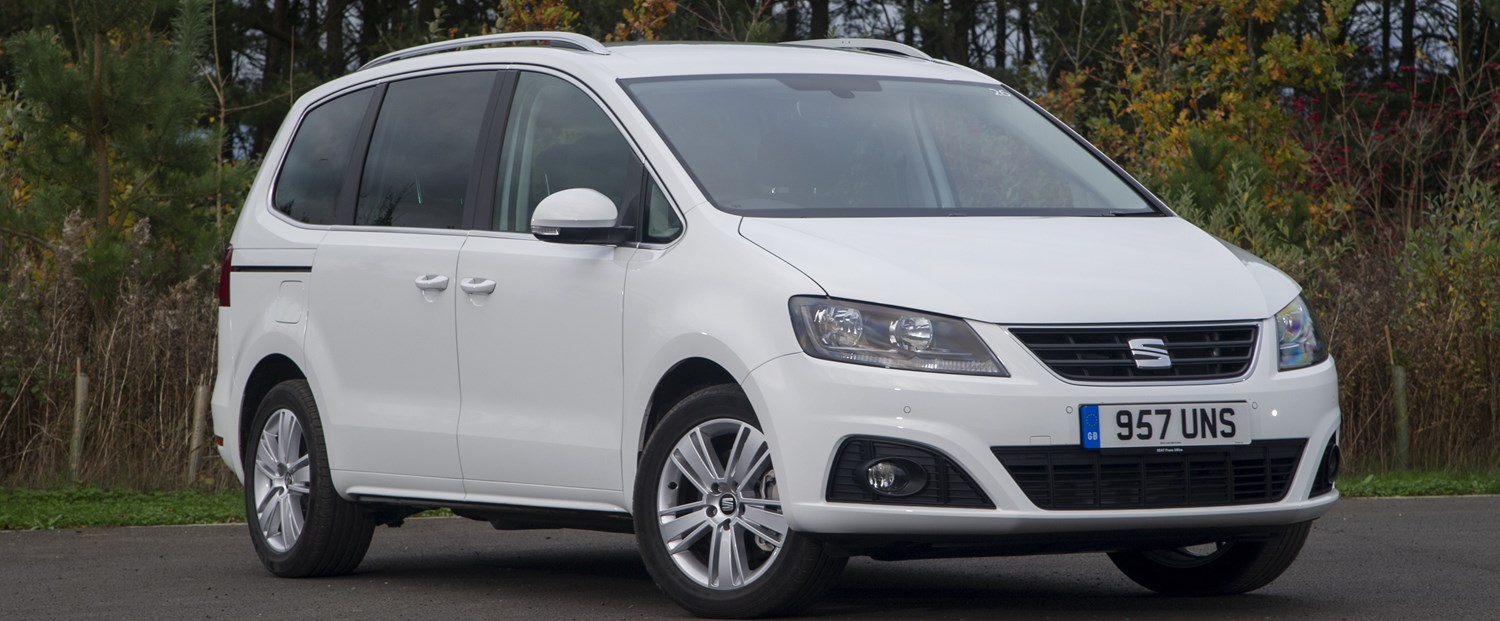Latest Model
Having been updated in 2015, the Alhambra has a good range of technologies and features for the modern driver, such as driver assistance systems and new infotainment options, and with an updated exterior design, the new version is an attractive option in the MPV market.
Widely seen as a cheaper VW Sharan, the Seat has the same proportions and seats available but has a lower starting price – although it must be noted that as the quality of the Alhambra has improved, the price has gone up as well.
Fitted with only two engine sizes, it could be said that there isn’t enough choice in that area but all the diesel options can return over 50mpg, with the Ecomotive diesel engines returning 55.4mpg.
Built to be as comfortable as possible for all seven occupants, the Alhambra has plenty of practicality if you’re taxiing people about or using the possible 2000 litres of storage space behind the front two seats.
Value for money
With a starting price of £25,435, the Alhambra is S trim with the 1.4-litre petrol engine is competitively priced when compared to its main rivals – the Volkswagen Sharan and the Ford S-Max – but what Seat has tried to do is out-equip and out-price its premium MPV rivals from the base spec.With the S line, Seat fits an infotainment system with 6.5-inch touchscreen, Bluetooth, front and rear parking sensors with
With the S line, Seat fits an infotainment system with 6.5-inch touchscreen, Bluetooth, front and rear parking sensors with on-screen view, start/stop system, emergency brake assist, tiredness recognition system and multi-collision braking system, as well as multiple storage solutions and three-zone climate control.
Although it isn’t the most expensive market, the starting price can still appear pretty steep, so what does the used market have to offer?
Well, high spec models in pre-facelift guise are available for prices around £23,500, with one such example coming in SE Lux trim. Fitted with leather seats in all three rows, parking assist camera, daytime running lights, USB/AUX/Bluetooth connectivity, multi-function steering wheel, automatic DSG gearbox and efficient 2.0-litre diesel engine, good examples of used Alhambras are available.
They provide exactly the same practicality options as the newest model and if the latest in infotainment technology is not a must-need item for you then pre-owned examples can be just the pick for you.
Looks and image
Let’s be honest, if you’re on the market for an MPV looks aren’t the first thing that you are looking for, as practicality is clearly your priority. But that doesn’t mean MPV have to be ugly and Seat has done a decent job with the Alhambra.
It won’t set design fanatics’ hearts racing but it does a good job for what it is. The interior look is very VW Group, with the common and well-thought out layout doing its ever-functional best. Again, however, the look is a bit bland and won’t set the world alight.
As with any tall car, body roll comes into the model’s performance but thanks to a well-tuned suspension setup, that is kept to a minimum. It isn’t the most MPV to drive – that goes to the Ford S-Max – but that isn’t the Alhambra’s forte.
Comfort, good steering feel and secure stance on the road help to make this model a good option for families looking for a solid run-around. Also coming with a high seating position for a good view of the road, electronic stability control and well-suited alloys at lower trim levels, the Alhambra does a good job against most of its rivals.
You would think that for a seven-seater, the rearmost seats will be quite cramped, but Seat has done a good job here and the second row of seats can be moved forwards to accommodate for taller people in the two back seats.
All seats are comfortable over longer journeys and tall people will be happy in any of the seven seats due to good leg and head space. With either cloth or leather coverings, the seats are supportive throughout, especially for the front two passengers.





